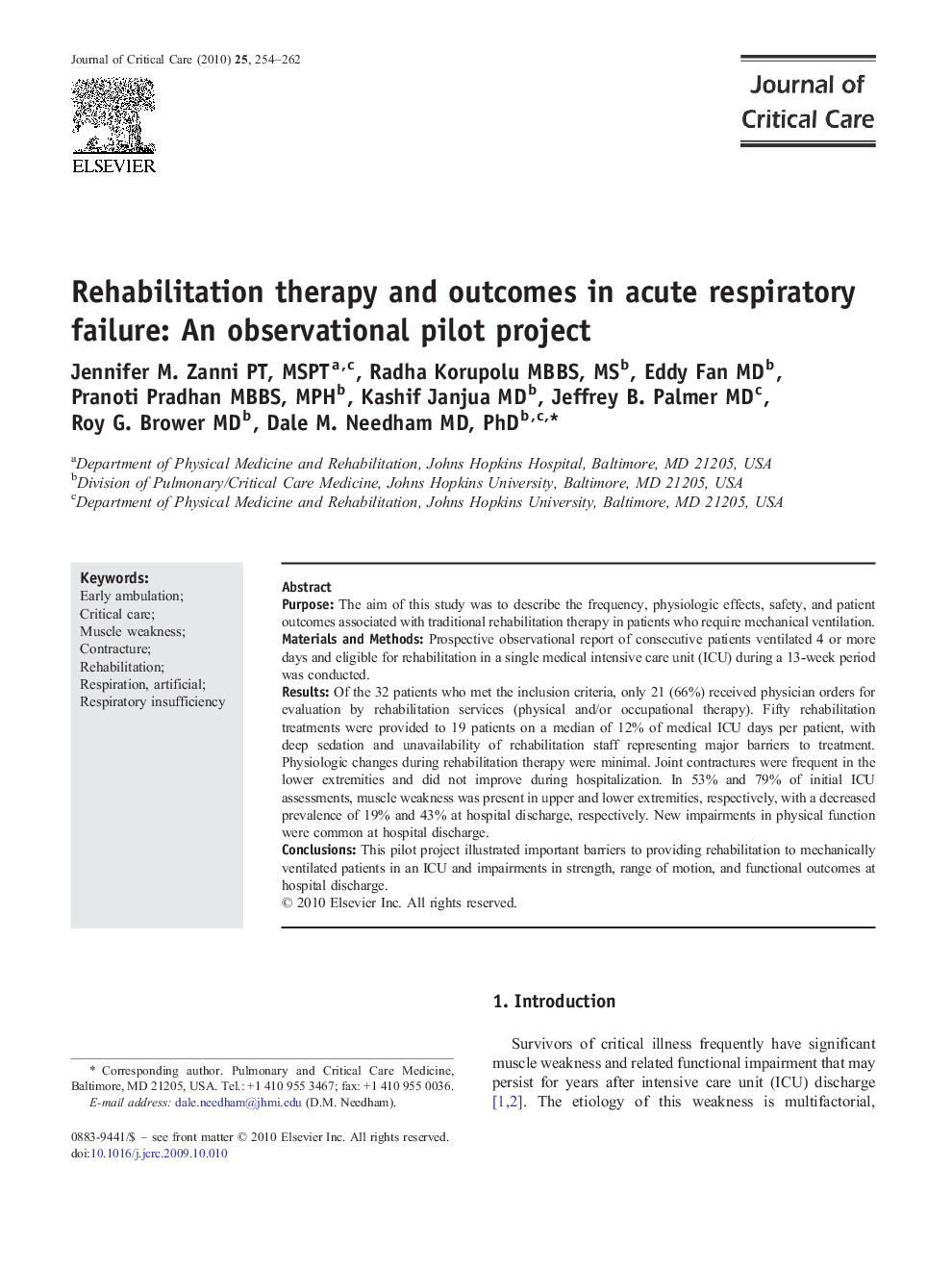| Article ID | Journal | Published Year | Pages | File Type |
|---|---|---|---|---|
| 2765520 | Journal of Critical Care | 2010 | 9 Pages |
PurposeThe aim of this study was to describe the frequency, physiologic effects, safety, and patient outcomes associated with traditional rehabilitation therapy in patients who require mechanical ventilation.Materials and MethodsProspective observational report of consecutive patients ventilated 4 or more days and eligible for rehabilitation in a single medical intensive care unit (ICU) during a 13-week period was conducted.ResultsOf the 32 patients who met the inclusion criteria, only 21 (66%) received physician orders for evaluation by rehabilitation services (physical and/or occupational therapy). Fifty rehabilitation treatments were provided to 19 patients on a median of 12% of medical ICU days per patient, with deep sedation and unavailability of rehabilitation staff representing major barriers to treatment. Physiologic changes during rehabilitation therapy were minimal. Joint contractures were frequent in the lower extremities and did not improve during hospitalization. In 53% and 79% of initial ICU assessments, muscle weakness was present in upper and lower extremities, respectively, with a decreased prevalence of 19% and 43% at hospital discharge, respectively. New impairments in physical function were common at hospital discharge.ConclusionsThis pilot project illustrated important barriers to providing rehabilitation to mechanically ventilated patients in an ICU and impairments in strength, range of motion, and functional outcomes at hospital discharge.
